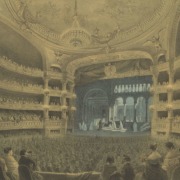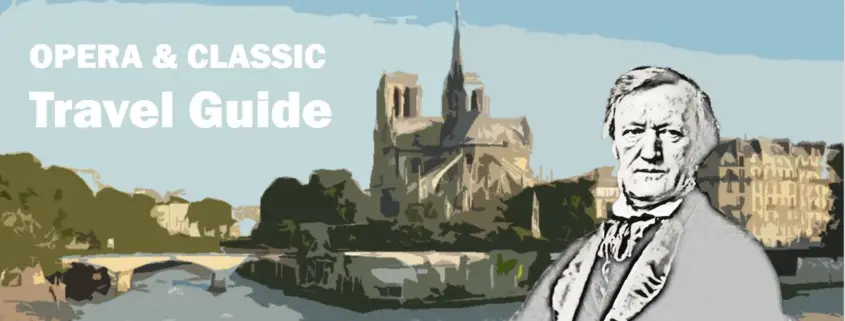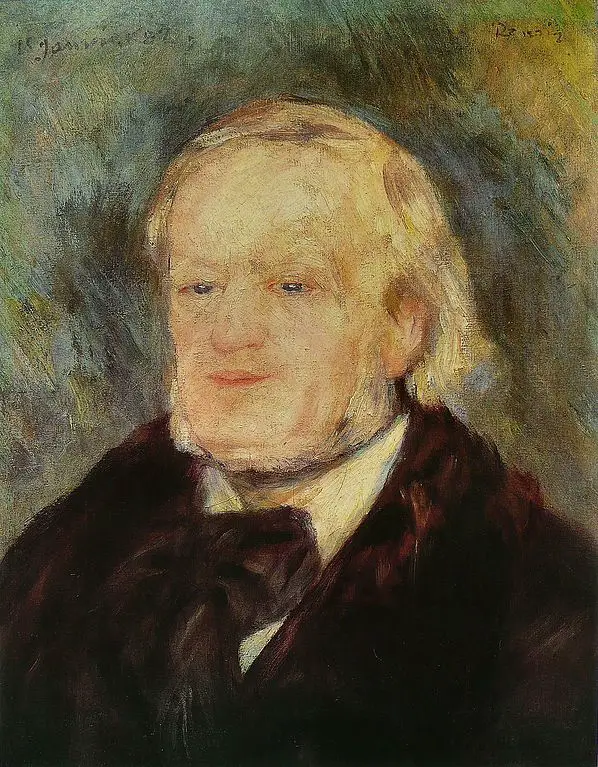Wagner’s last Painting
The series about historical places of opera art. Get to know exciting excursion and travel ideas for opera lovers. This time: Paris and Wagner’s Painting
All Destinations on google maps with links to detailed Blogposts:
Wagner in Paris

Wagner’s lifelong dream was to succeed in Paris; it was almost obsessive how he sought recognition in the European capital of opera. No less than ten times he stayed in Paris for longer periods.
In Paris, during his first longer visit of almost two years, he wanted to stage his “Rienzi”. Meyerbeer, who was immensely successful in Paris, supported him, but his work was not accepted at the Opéra. Wagner showed no gratitude to Meyerbeer; all his life he accused the “Jew” Meyerbeer of ill-will. So he left Paris for Dresden.
In 1860 he made another attempt, but his artistic fortunes in Paris never recovered from the Tannhäuser fiasco at the Grand Opéra (see below).
LINK TO THE COMPLETE WAGNER BIOGRAPHY
TO THE OVERVIEW OF ALL DESTINATIONS “OPERA & CLASSIC OF PARIS“.
Destination Musée d’Orsay in Paris
Renoir was an ardent Wagner supporter and his desire was to portray the master. In 1882 he succeeded in Palermo, shortly after Wagner had completed his last work, “Parsifal” and a few months before his death. Renoir was given half and half a sitting. Wagner appeared exhilarated, but the picture relentlessly shows the face of a tired man, marked by illness.
Renoir’s painting:
Musical Background – the Paris Tannhäuser-fiasco
In order to promote familiarity with his works, Wagner conducted three concerts of excerpts from various operas at the beginning of 1860. Among the audience were all the musical celebrities of Paris at the time, such as Berlioz, Rossini, Meyerbeer, Auber and Gounod. The response was extraordinary and Wagner, with the help of the wife of the Austrian ambassador, managed to get Napoleon III to order the performance of “Tannhäuser” the following year. What happened in 1861 went down in the annals of opera history. Wagner adapted the work to the conventions of the Grand Opéra; among other things, the Bachanale of the first movement was expanded with a ballet, and a French-language libretto was created. Wagner personally staged the opera, taking 164 rehearsals to prepare the sometimes overworked musical staff. But the performances turned into a fiasco. The Jockey Club, a larger group of dandies, sabotaged the performances because they were accustomed to appearing only in the second act, when their mistresses performed the usual ballet. In protest that Wagner performed the ballet in the first act, they unpacked whistles and interrupted the play with noise and heckling. Deeply hurt and heavily in debt, Wagner ended the Paris adventure after three performances.
Link to the portrait of the opera “Tannhäuser”
https://opera-inside.com/tannhauser-by-richard-wagner-the-opera-guide-synopsis/





Leave a Reply
Want to join the discussion?Feel free to contribute!